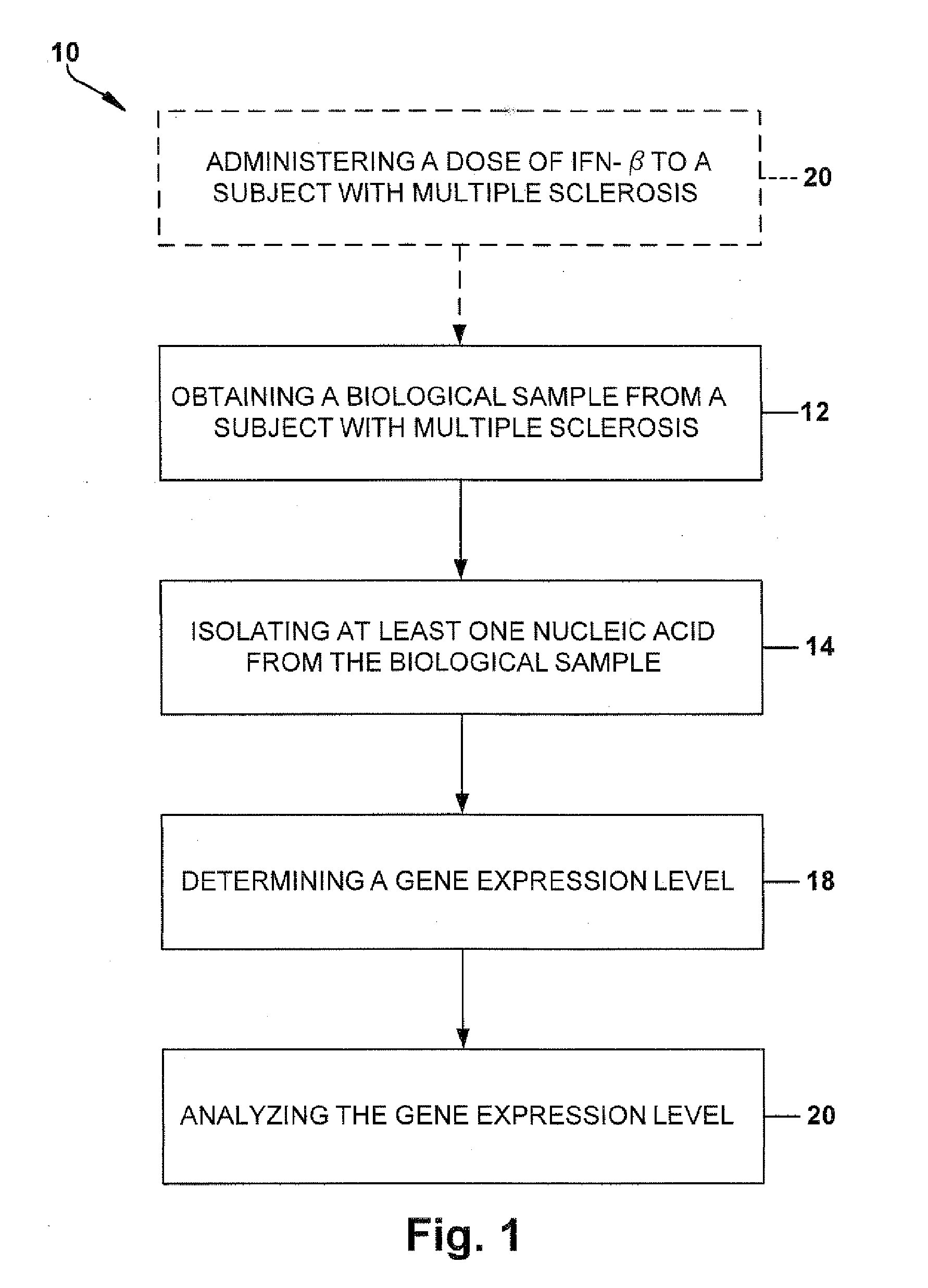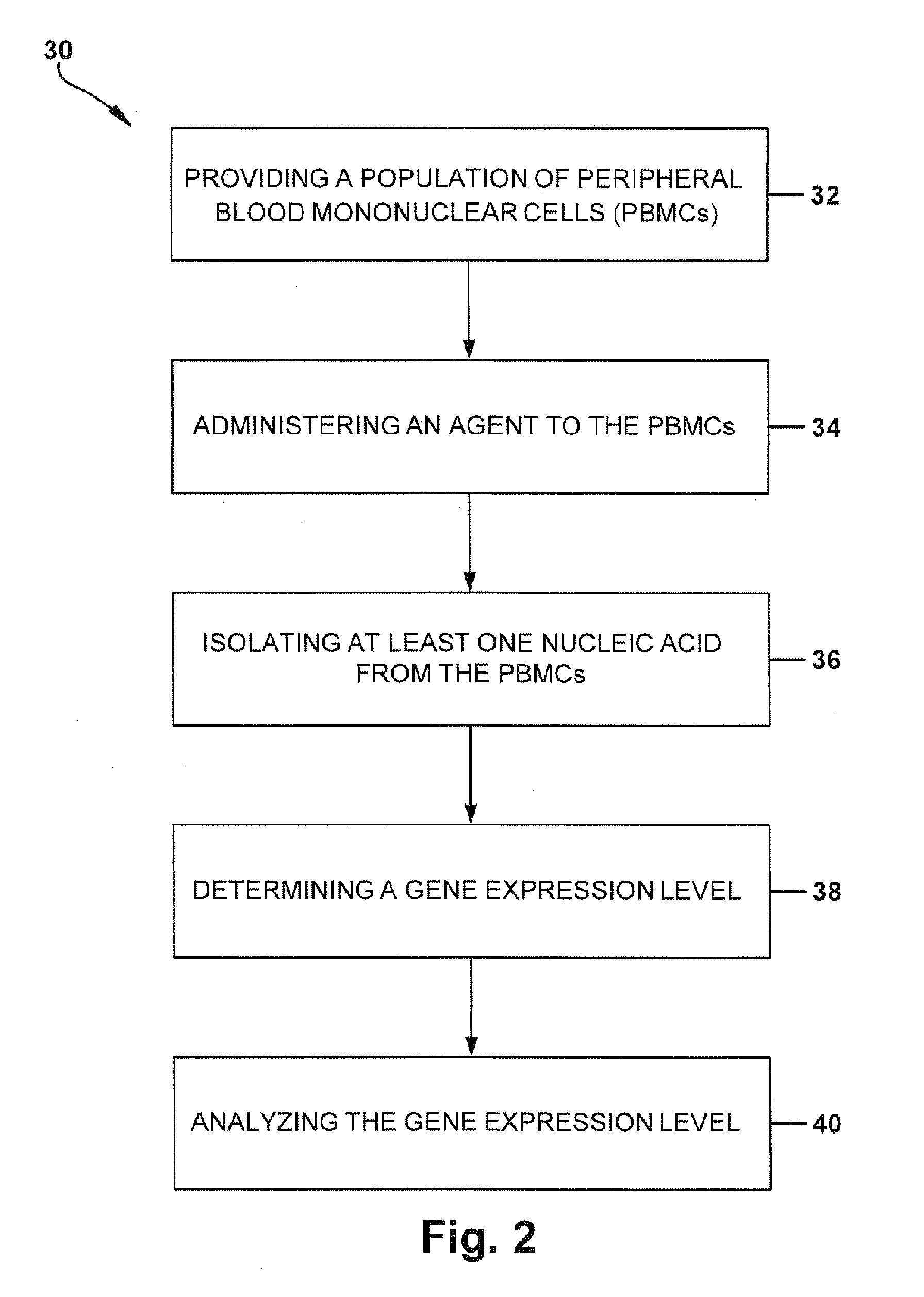Method for Predicting a Therapy Response in Subjects with Multiple Sclerosis
a multiple sclerosis and therapy response technology, applied in the field of multiple sclerosis therapy response prediction methods, can solve the problems of limited ability of clinical and radiological variables to predict disease outcome, exposed to side effects risk without sound rationale,
- Summary
- Abstract
- Description
- Claims
- Application Information
AI Technical Summary
Benefits of technology
Problems solved by technology
Method used
Image
Examples
example 1
Methods
Clinical Protocol
[0071]The Cleveland Clinic (CC) Institutional Review Board approved the study. All subjects provided written informed consent. Subjects were eligible if they had clinically isolated syndrome (CIS) or relapsing-remitting MS, were initiating intramuscular IFN-β-1a treatment, were previously treatment-naïve, and were followed at CC MS Center. Ninety-nine subjects were enrolled. Each patient was examined at baseline, 6, 12, and 24 months. At 3 and 18 months, patients were contacted by phone to assess treatment compliance and ascertain side effects. At the baseline visit, 6, and 24 months, blood was collected in a clinical research unit for IRG analysis immediately before and exactly 12 hours after an IFN-β injection, and the patients had standardized brain MRI scans for quantitative assessment of lesions and brain atrophy. At each visit, patients had neurological exams to determine the Kurtzke Expanded Disability Scale Score (Kurtzke, J. F., Neurology 33:1444-145...
example 2
Spotting the Macroarray Membranes
[0090]Wipe down the entire bench area to be used for spotting to eliminate any excess dust which may interfere with spotting. Next, cover the spotting area with 3 MM paper and set the replicator pins in the Tupperware container of VP110 pin cleaning solution (30 mL of solution to 120 mL of dH2O). The pins should be about half way submerged in the cleaning solution. While the pins are “soaking” cut enough Hybond-N+ membranes to supply your experiment. For example, while wearing gloves and using a ruler, mark rectangles 74 mm×115 mm on the paper layer used to shield the hybond paper. Make sure not to place too much pressure on the paper and membrane with your hands or elbows and try to have as little contact as possible with the paper covering the center of what will be your membrane. Also, make sure that the membrane doesn't slide around within the paper cover, and use either a clean scalpel and ruler or a clean pair of scissors to cut along the marke...
PUM
| Property | Measurement | Unit |
|---|---|---|
| final volume | aaaaa | aaaaa |
| final volume | aaaaa | aaaaa |
| time | aaaaa | aaaaa |
Abstract
Description
Claims
Application Information
 Login to View More
Login to View More - R&D
- Intellectual Property
- Life Sciences
- Materials
- Tech Scout
- Unparalleled Data Quality
- Higher Quality Content
- 60% Fewer Hallucinations
Browse by: Latest US Patents, China's latest patents, Technical Efficacy Thesaurus, Application Domain, Technology Topic, Popular Technical Reports.
© 2025 PatSnap. All rights reserved.Legal|Privacy policy|Modern Slavery Act Transparency Statement|Sitemap|About US| Contact US: help@patsnap.com



